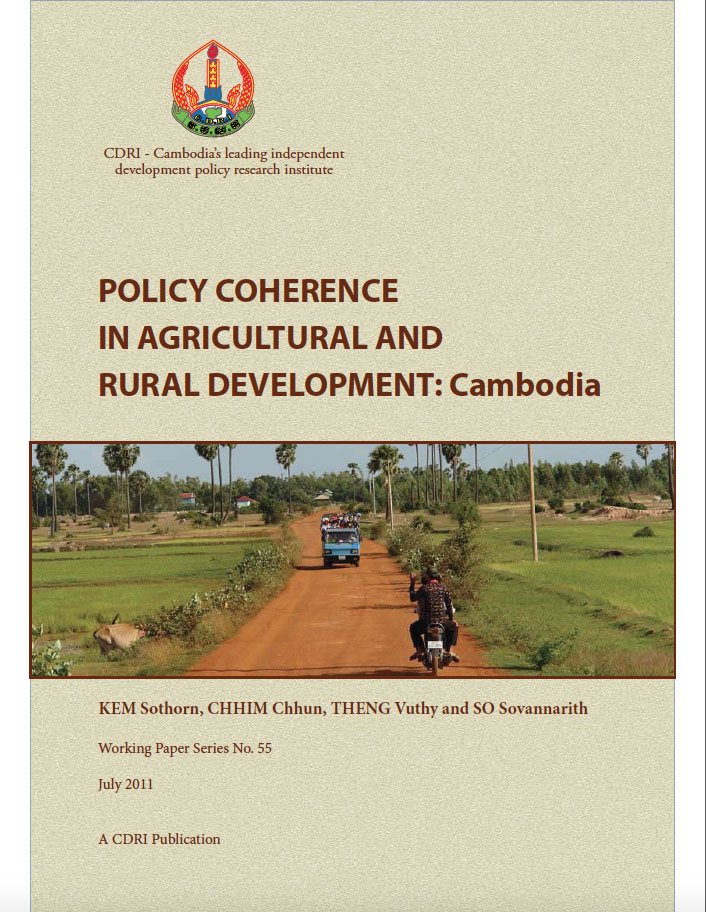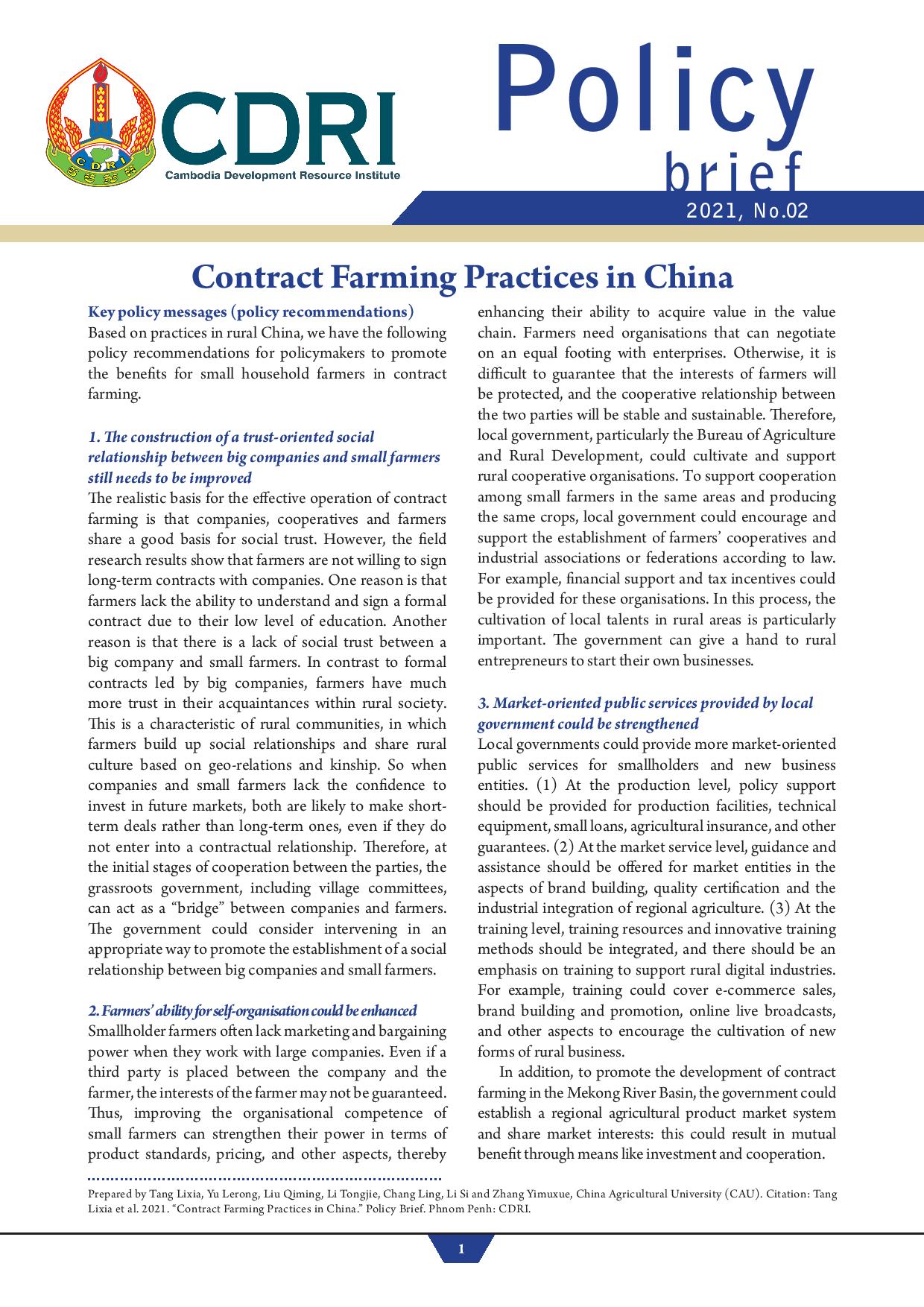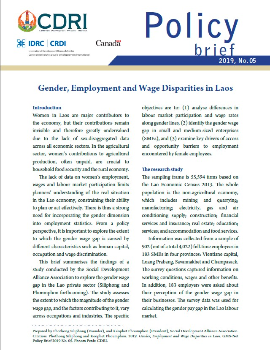
Policy Coherence in Agricultural and Rural Development: Cambodia
Keyword: Policy coherence for development (PCD), alignment, harmonisation, synergy
Abstract/Summary
This paper presents
the main findings of the Policy Coherence for Agriculture and Rural Development
study. Policy Coherence for Development (PCD) is about making sure that
policies for sector development do not contradict or undermine one another and
that as far as possible, policies are complementary and create synergy. In
practice, it is about reconciling the multiple concerns of diverse
stakeholders. Our study aimed to identify: (1) the major problems related to
coherence among agriculture and rural development (ARD) policies; (2) the
structures and processes used to ensure coherence and their effectiveness: (3)
and how different interests in policymaking are reconciled. We also attempted
to draw lessons, including examples of good practice.
For Cambodia,
agriculture and rural development (ARD) is one of the most important sectors in
alleviating rural poverty and promoting equitable growth. The sector is complex
and multifaceted: development partners working in ARD in Cambodia usually have
different priorities, arising from their own country situation analyses and
assistance agendas. This has led to the fragmentation of programmes and
projects, and thus reduced potential for synergy. ARD subsectoral policies
formulated based on the NSDP framework have helped improve the harmonisation
and alignment of development partners’ initiatives with government. However,
despite the comprehensiveness of the ARD policy framework, lack of clear
prioritisation blocks potential synergy that would otherwise enhance the
sector’s development. Weak intra-government coordination, institutional
complexity and fragmentation create overlapping or contradictory sectoral
policies which undermine development. A number of mechanisms have been deployed
to improve policy coherence, enhance aid effectiveness and address coordination
issues at various levels. Among these, the important roles of ARD Technical
Working Groups in ensuring coordination and coherence at sectoral level have
been undermined by a breakdown in communication, goodwill, participation and
trust between government and development partners participants. It is clear
that coherence among different ARD initiatives is determined not only by
donors’ efforts and commitment but also, largely by government action to tailor
and direct donors’ activities as well as improve its internal coordination for
better aid utilisation. Although Cambodia still needs support and faces a
number of internal challenges, the country must continuously demonstrate
self-reliance with regard to developing and managing policy implementation.
Such efforts could help Cambodia’s government achieve a coherent ARD strategy
that could provide real synergy in the sector.



